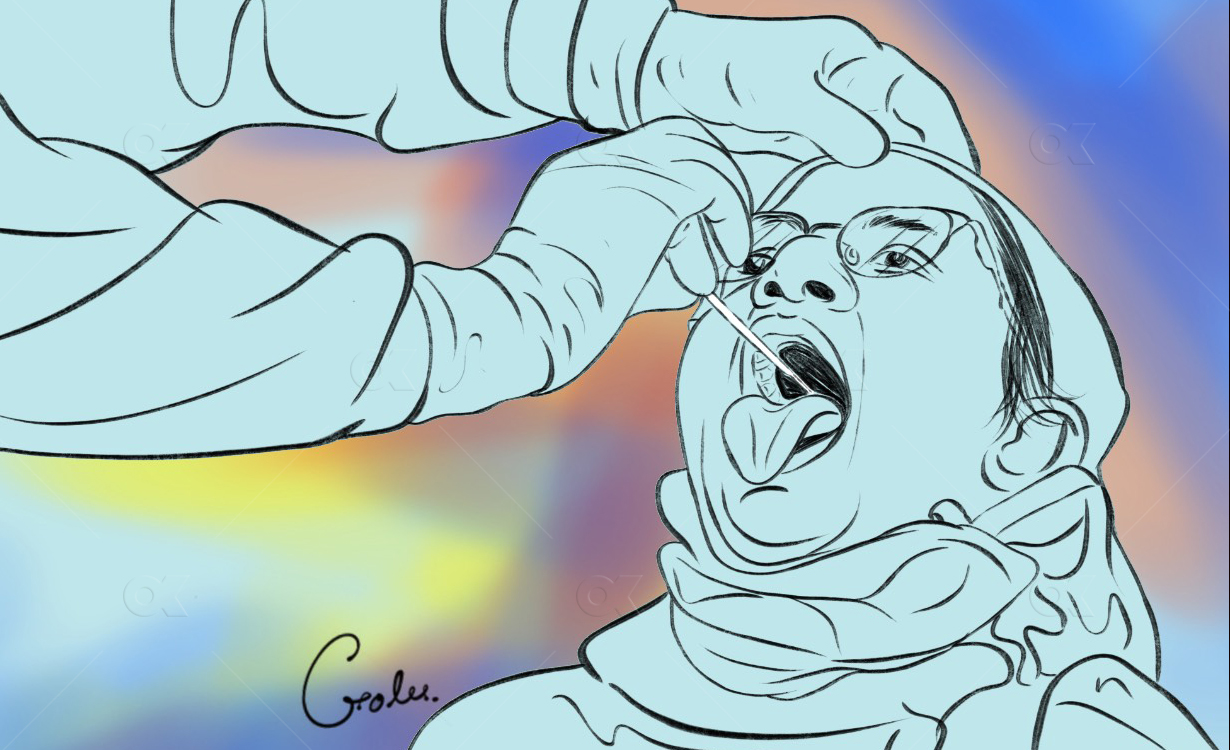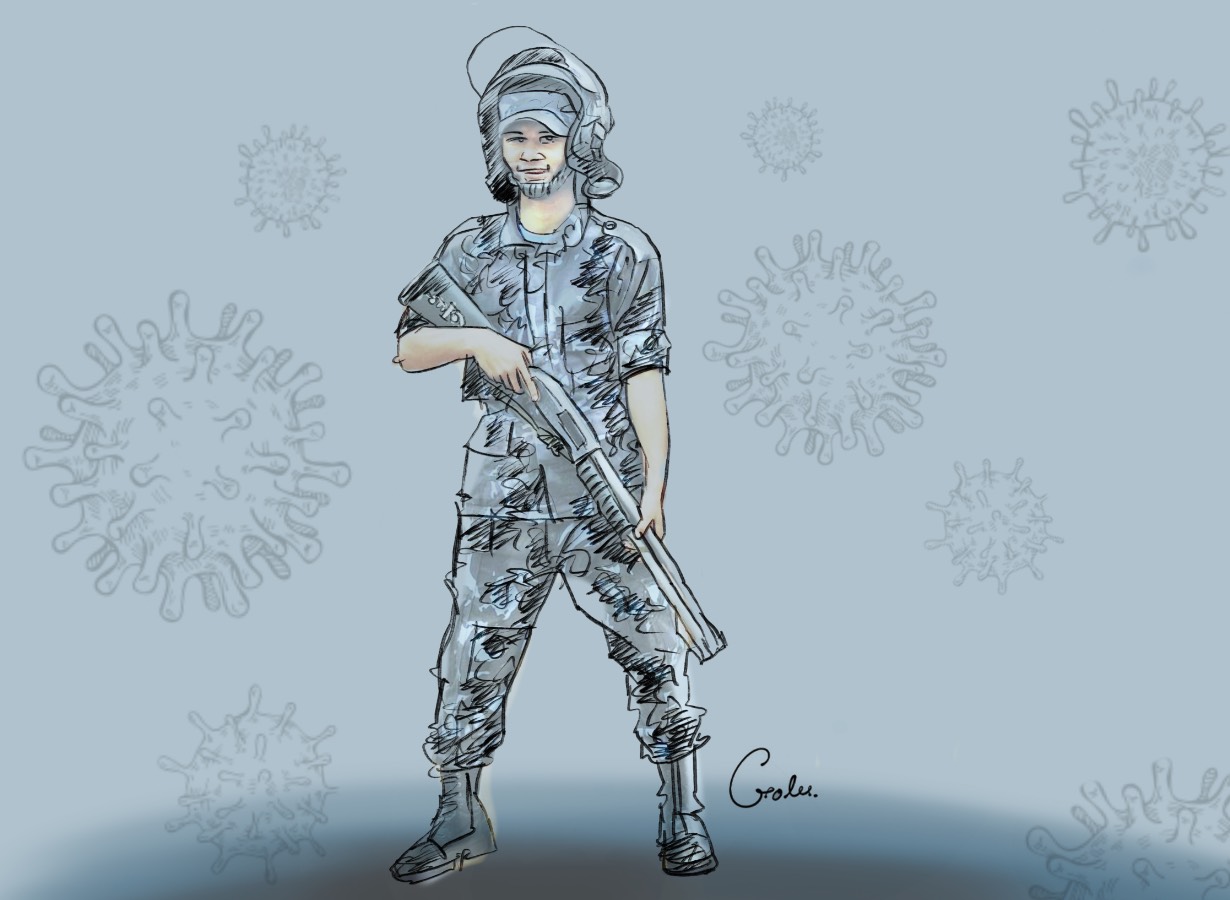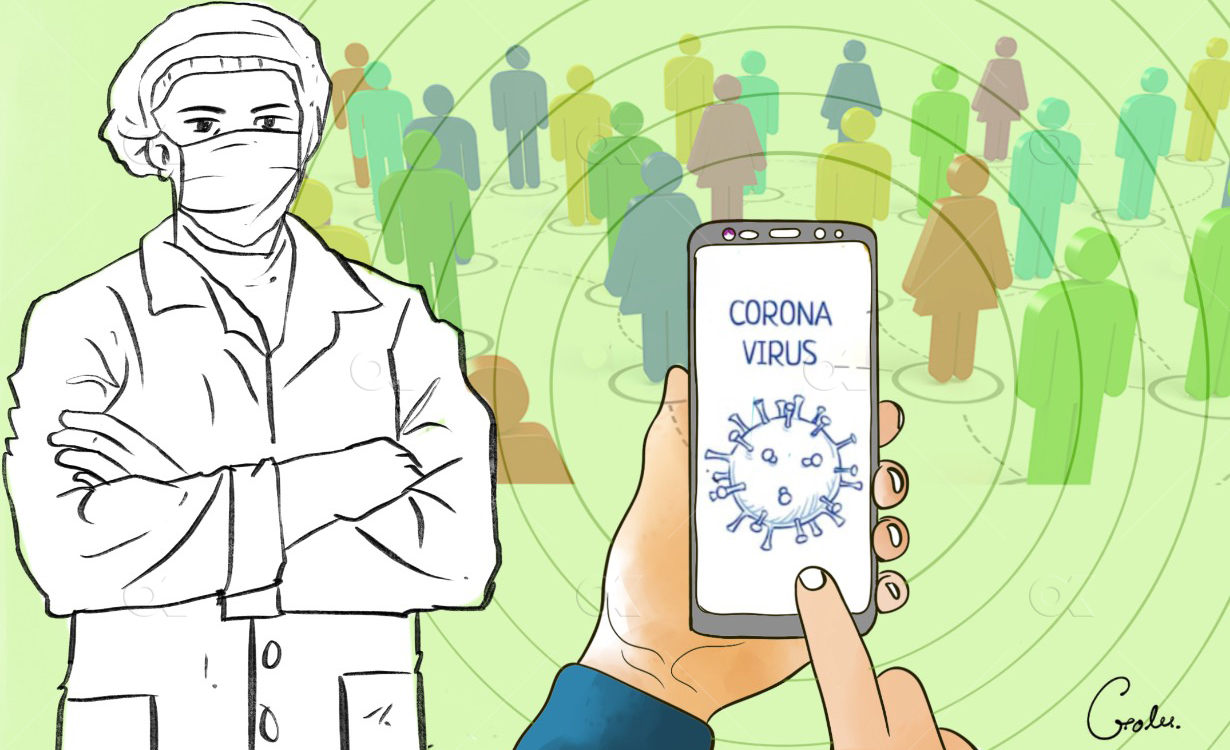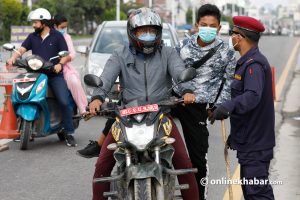 A 29-year-old woman, who used to live in Tokha of Kathmandu, died of Covid-19, on Thursday last week in Dhulikhel Hospital; it was the first fatal Covid-19 case in Nepal.
A 29-year-old woman, who used to live in Tokha of Kathmandu, died of Covid-19, on Thursday last week in Dhulikhel Hospital; it was the first fatal Covid-19 case in Nepal.
The woman used to run a vegetable shop in Balaju of Kathmandu until three months ago. On May 5, she was rushed to Tribhuvan University Teaching Hospital in Maharajgunj from Tokha, for delivery. She gave birth to her second child the next day and she was discharged on the third day. After that, she was taken to her permanent house in Sindhupalchok. But, after a few days, she started feeling unwell; she was taken to Bahrabise Primary Treatment Centre, and referred to Dhulikhel Hospital. But, the woman denied going to the hospital until the child is named as per the family rituals.
Meanwhile, a positive coronavirus case was reported in a child who was treated in the TUTH. The local leaders in Bahrabise then suggested the family take her to a hospital. She was taken to Dhulikhel Hospital at 9:30 pm on Thursday; but, only after half an hour, she was announced dead.
How she contracted the coronavirus is still not confirmed though health officials are working on contact tracing.
The Covid-19 treatment team coordinator in the TUTH, Dr Santosh Kumar Das, says the new mother could not have been infected from the six-year-old child who tested positive for the virus as the maternal ward and the neurosurgery ward, where the child was, are far from each other, a distance enough to rule out the possibility.
***
 On Friday last week, 664 employees of the Kathmandu Metropolitan City went through the rapid diagnostic test (RDT) for the coronavirus; 31 tested positive. Immediately after, their swab samples were collected for the polymerase chain reaction (PCR) test, in which all tested negative.
On Friday last week, 664 employees of the Kathmandu Metropolitan City went through the rapid diagnostic test (RDT) for the coronavirus; 31 tested positive. Immediately after, their swab samples were collected for the polymerase chain reaction (PCR) test, in which all tested negative.
Public health scientist Dr Sameer Mani Dixit explains that positive RDT results suggest they had the coronavirus infection at some point. This means if and when the virus was active, they could have transmitted the virus to others. And, with 31 positive RDT results, we can deduce that the coronavirus has already spread across the Kathmandu Valley, but the cases just appear when they are tested.
***
Both cases are testimonials to indicate that the coronavirus is spreading throughout Kathmandu. Doctors, other than Dixit, also corroborate.
“In tests in bulk, sometimes we can get false positives. There is no 100 per cent accuracy. However, in over 600 tests, there cannot be 31 false positives,” clarifies public health expert Dr Bishwanath Koirala, adding, “The lockdown has not restricted people’s flow; people are even travelling in Kathmandu from the places where the virus had already spread. So, the virus has spread here as well.”
The experts explain when the Covid-19 enters a human body, the body automatically starts producing a kind of protein, which is better known as antibodies. There are two kinds of antibodies that the human body produces; IgM and IgG. The RDT kits used up to now actually detect the antibodies; however, they do not clarify if they are IgM or IgG. So, this fact questions its credibility.
Nonetheless, the government has brought new RDT kits that detect if the antibodies are IgM or IgG. A doctor from the Epidemiology and Disease Control Division involved in the RDT tests of the KMC employees informs one among the 31 tested positive for IgG while others for IgM antibodies. Likewise, RDT positive results from the Kalimati vegetable market had two IgG positives while one IgM positive cases.
According to virologist Dr Sudip Khadka, the coronavirus starts producing IgM antibodies in the first week of transmission. But still, if one conducts an RDT within nine to 10 days, there is a possibility that the case will test negative, he adds. The kits only detect the virus after nine days of infection in the body. On the other hand, IgG antibodies are produced 15-20 days after the infection. Even if one tests before that, the case turns out to be negative, adds Khadka.
Even after conducting RDTs for two kinds of antibodies, Khadka says, the PCR tests are essential for confirmation of the infection. Epidemiology and Disease Control Division Director Basudev Pandey, on the other hand, comments that those who tested positive for IgM can also test positive for PCR in just a matter of a few days.

If the experts’ suggestions are anything to go by, the positive results of 30 KMC employees mean they have been infected recently; there is a chance that they will test positive in PCR tests as well in the next few days. Meanwhile, a KMC driver has tested positive for the virus in the PCR test also, on Tuesday. Also on Tuesday, two police personnel at Metropolitan Police Circle, Kalimati, tested positive for the virus.
What is the source of the virus?
Though experts believe that the virus might have spread across Kathmandu, they are uncertain about the source of the virus.
Pandey comments, “It will be very difficult to determine where and how the KMC employees came in contact with the virus. But we are doing contact tracing for the woman who succumbed to the virus.”
 Pandey says the Nepali Police, Provincial Health Service Directorate, and local governments are jointly trying to collect swab samples from the people she contacted in the TUTH, her residence in Tokha, and her hometown in Bahrabise.
Pandey says the Nepali Police, Provincial Health Service Directorate, and local governments are jointly trying to collect swab samples from the people she contacted in the TUTH, her residence in Tokha, and her hometown in Bahrabise.
Only after the results of PCR tests of these contacts, they will be able to determine the source.
“Now we cannot say that the virus is not in Kathmandu; there is no longer a base for that,” says infectious disease expert Dr Anup Subedi, “There is a possibility that the RDT positive cases can also spread the virus. All of them should be quarantined and tested properly.”
Against his advice, though, the KMC employees have neither been quarantined nor are their contacts traced. In fact, the KMC had celebrated that they tested negative in the PCR tests.
“It is not possible to conduct contact tracing for all RDT positives,” says Pandey, “Only if they test positive in the PCR tests too, we will trace the contacts.” He restates if one tests positive in the RDT but negative in the PCR test, it means the virus has already been inactive in the body and cannot infect others. “So we should not waste our time in tracing their contacts.”
Additional research has to be done to find out why the IgM positive cases test negative fin the PCR tests. “With multiple cases of RDT positives, there should have been at least a few PCR positive cases too. There is now a substantial reason to examine the kits after everyone tested negative,” Pandey puts forward.






















